As you know, safety helmets are important protective headwear that protect you from injuries. But with many options available in the market, it can be confusing for you to pick the right safety helmet according to your job.
Therefore, we have prepared this simple blog post for you. You will learn different types of safety helmets, their features, purpose, plus the situations where you need them most.
Safety Helmet Classification/Different Types of Safety Helmets
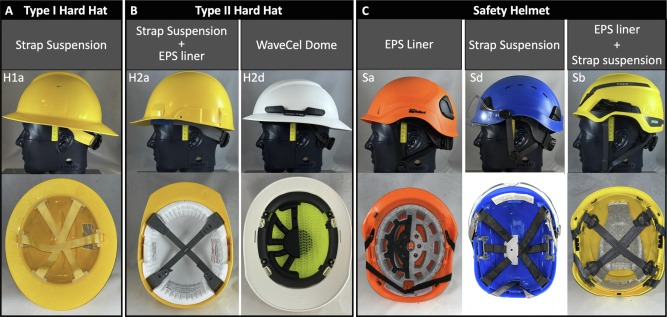
Class A Helmets
They are also known as industrial helmets and are classified according to the ANSI (American National Standards Institute) or European Standards. Class A helmets are designed to protect the head from any type of overhead hazards. Your head will be protected from any falling objects by wearing such helmets.
Type A helmets have hard outer shells to resist the force and also a suspension inside to absorb the impact and pressure without hurting the head. These helmets also protect against high-voltage electrical hazards.
Usually, these helmets are designed to protect against overhead hazards; however, they are sometimes also equipped to provide extra protection from the sides and back. You can use these helmets during mining, construction work, forestry and other industrial work. Such helmets are also equipped with a visor and chin straps to provide extra security and ease of wearing.
Class B Helmets
Class B helmets are specifically designed to protect against strong electrical hazards up to 20,000 volts. These helmets are designed according to international standards set by ANSI Z89.1 in the US or EN 397 in Europe. You should always wear this helmet if you are working in an environment where you are exposed to high-voltage electrical installations.
The helmet is made with insulated materials, like fiberglass and HDPE(High-Density Polyethylene), so that electricity can not pass through them and provide better security. It also gives protection against overhead hazards, like all industrial helmets.
There is a suspension inside the helmets to protect in case of falling any object falls on it and it also offers a sense of comfort for longer usage. You should use this helmet if you work in any construction site where you can be exposed to high voltage, electrical power houses and utility work.
Class C Helmets
Class C helmets are designed for industrial usage; however, they don’t protect against electrical hazards. Such helmets are widely used in industrial settings due to their lightweight and being secure against falling objects.
The outer shells of these helmets are made of HDPE or polycarbonate, which makes them lightweight and easy to use for a longer period without any disturbance. You can not use these helmets where you are exposed to electrical installations.
This class of helmets also has ventilation holes, which allow air to pass and lower the temperature of the head and make it easy to work in hot and humid conditions. There is an advanced suspension inside the helmet, along with padding to make you more comfortable and protected. You can wear this helmet at construction sites, warehouses, logistics and industrial settings.
Class G Helmets
The class G helmets are designed to protect you against overhead hazards, especially from falling objects. These helmets protect you from low-voltage electrical currents up to 2200 volts.
You can wear such helmets if you are working in an environment where you are exposed to low-level electrical currents. The outer shell of these helmets is made of lightweight materials, like HDPE, Polycarbonate & fiberglass.
You should wear these helmets if you are working as an electrician in houses, construction sites or industrial work where you are exposed to low-level electrical installations. They are also equipped with a modern suspension and ventilation for longer use. However, these helmets don’t provide lateral protection.
Class E Helmets
Class E helmets are superior in quality and designed to protect against high-impact falling objects and also secure you against high-voltage electrical currents up to 20,000 volts.
Such helmets are made of non-conductive materials, including polycarbonate, fiberglass & HDPE, to protect you against higher electrical hazards. The helmets are designed to meet the international impact protection standards according to the ANSI Z89.1 (US) and EN397 (Europe).
You should wear these helmets if you work in a highly sensitive environment where you are exposed to high-voltage current and falling objects. These helmets are costly and should be worn where it is necessary to save extra cost.
Safety Helmet Uses
1. Bump Caps
They are typically used where the danger is less of falling objects and you will get basic impact protection. Bump caps are lightweight and easy to wear compared to hard hats. You can wear these helmets in warehouses, minor industries, home services and other such places.
These helmets protect you against head injuries from minor objects. You will also get an internal padding or foam to absorb pressure and provide ventilation for longer usage.
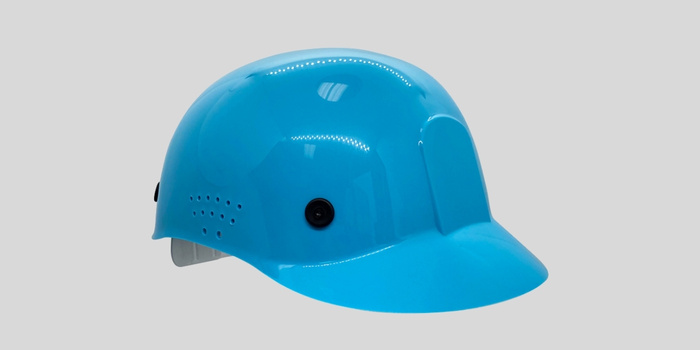
2. Climbing Helmets
The climbing helmets are specifically designed to protect against head injuries in the event of a climber falling or being struck by a heavy object. Such helmets are made of hard outer shells to absorb heavy impacts and they are constructed from materials like ABS (Acrylonitrile Butadiene Styrene) plastic & polycarbonates.
They are further divided into 3 types, which are hard shell helmets, soft shell helmets and hybrid helmets. These are also equipped with air ventilation to keep the head temperature cool while climbing.

3. Firefighter Helmets
An advanced form of helmets that are designed to protect against fire debris and are resistant to extreme heat. These helmets are made of special materials that don’t catch fire and can resist the heat up to 260 centigrade in some cases.
Such helmets are also equipped with face shields and a visor to give extra protection to the face during heat exposures. The advanced form of these helmets also has a communication system, which is used to communicate with other members during a rescue operation.
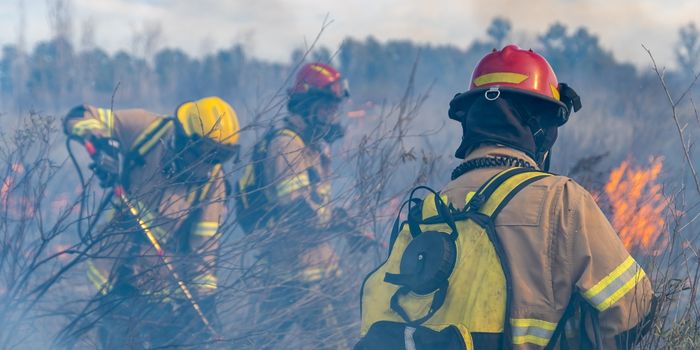
4. Motorcycle Helmets
These helmets are designed to keep you safe in case of any accident while riding a motorcycle. You should wear these helmets to be protected and safe during the ride. They are further divided into three types.

- Full Face Helmet
Such helmets are designed to cover the full face, along with head sides and the back. It gives you a full sense of safety while riding a bike. It will cover your face and chin, so you will not be exposed to the debris, air and other elements.
- Open Face Helmet
As the name suggests, open-face helmets don’t offer full safety to the face. These helmets give you more comfort and ventilation during use; however, your face and chin are not protected against accidents.
- Flip-Up Helmet
These helmets provide more options to you, so that you can cover your face or flip the face lid up to get the fresh air during the ride. Such flip-up helmets are advanced and offer you more freedom while using them.
5. Bicycle Helmets
Bicycle helmets are designed to give protection against head injuries during a ride. These helmets are further divided into different types, including mountain bike helmets, commuter helmets, road bike helmets & sports helmets.
Some advanced helmets are also equipped with lights to offer an extra feature during cycling. The mountain bike helmets have a hard shell and offer extra security against sharp rocks.

6. Hard Hats / Industrial Helmets
Hard hat helmets are designed for industrial use and keep you safe against falling objects and give a good level of impact protection. You should use these helmets during mining, construction, engineering and other important industrial activities.
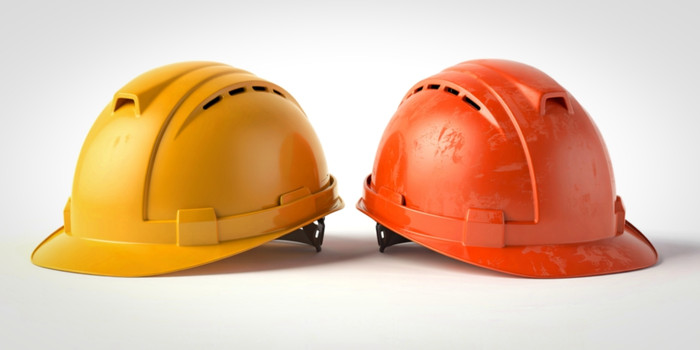
- Cap Style Hard Hat
The cap style hard hats are simple and easy to wear. They are lightweight with a narrow brim and provide safety against overhead hazards. Such hard hats are the most commonly used helmets in industrial settings.
- Full Brim Hard Hat
These full brim hard hats are used to protect you against falling objects as well as the sun, air and snow. They provide extra protection to the ears and neck in a more convincing way. Their main specification is their wide brim.
7. Rescue Helmets
Rescue helmets protect rescue workers against head injuries, heat, water, accidents and other emergencies. These helmets are designed to offer safety and can absorb high pressures and resist falling debris in a better way.
Such helmets have better visibility to assist in operations and are also equipped with communication systems to communicate with each other without any difficulty. Lights are also installed on these helmets.

8. Welding Helmets
The specially designed helmets are to protect against the flying debris during the welding and keep your eyes safe from the intense light damage. Further, these are divided into two main types.
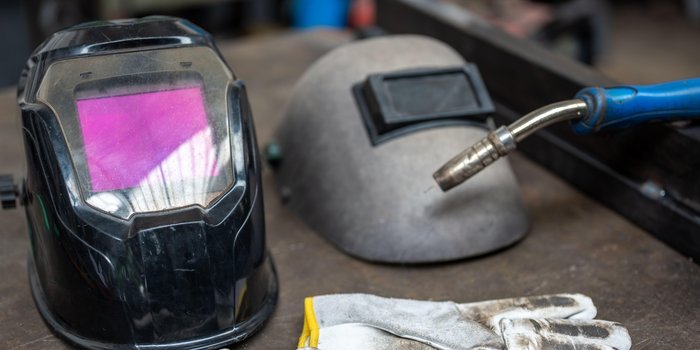
- Auto-Darkening Helmet
An advanced form of helmets that are equipped with photoelectric sensors that can change the shade of the lens according to the intensity of the welding arc. It becomes darker in the case of a brighter welding arc and becomes lighter and provides more visibility when the arc is turned off.
- Passive/Fixed Shade Helmet
This helmet provides a fixed shade lens and doesn’t change its shade according to the light. You should adjust your visibility yourself while doing welding work. It has a low cost compared to the auto-darkening helmet.
9. Electrician Helmets
Electrician helmets are specifically designed to protect against electrical hazards. You can choose Class E in case of exposure to high-voltage electrical currents and Class G in case of low-voltage.
Such helmets are made with insulated materials to resist the electrical current and keep you safe. You should always wear these helmets before working in any electrical installation.
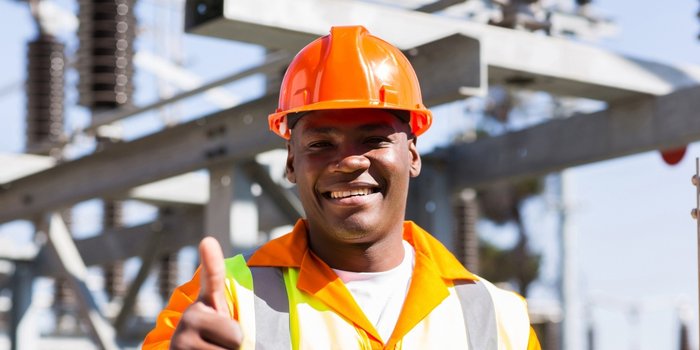
Safety Helmet Color Code As Per OSHA
OSHA did not define any color code for safety helmets; however, some rules are set by employers and have become a general industry practice. Some specific color helmets are used by specific members. Some details are given below.
Weiß: It indicates the officer level, including managers, foremen, engineers, etc.
Gelb: General labour uses yellow.
Blau: Technical workers wear this, such as plumbers, electricians and carpenters.
Grün: Environmental safety officers.
Rot: Firefighters, Emergency responders.
Orange: Road construction workers.
Pink: Temporary workers or guests.
Brown: Welders and workers who are working in a high-heat environment.
Schwarz: Sometimes used by site managers and foremen.
Purple: Outside contractors, specialized workers.
How To Choose Right Helmet: Safety Helmet Test
Schlagfestigkeit
You should keep in mind the maximum impact resistance of the helmet before use. If you are working in an industrial space, you should know how much impact your helmet can withstand to keep you safe in case of falling objects. You can drop an object on your helmet to test its impact resistance before wearing it.
Comfort
Another important factor in choosing the helmet type. If you are comfortable wearing a helmet, you should prefer it over others. You can test the comfort level by using the helmet for a longer period and see where it disturbs you.
Haltbarkeit
The helmet must be durable and should not be affected by the harsh environmental factors, like UV radiation, water, fire and other possible factors. You can expose your helmets to the damaging factors, like chemicals, UV radiation and other agents, to see the results and changes in the dynamics of the helmet.
Sichtweite
Your helmet must be visible from far away at night to avoid any possible accident. Different reflective materials are used in helmets to increase their visibility. The workers who work in low-light and high-traffic areas are more prone to this. You can check the visibility by putting some light on the helmet in dim lights.
Compatibility
You must also check the compatibility of your helmet with other gadgets that you need to use. In some cases, you need extra protection, so you must consider the ease of using those safety gears along with your helmet. You can check the compatibility with communication systems and other safety features.
Letzte Worte
Now you see that safety helmets have many types and each design is for specific risks and environments. Industrial hard hats, climbing, welding or rescue helmets, every option has a unique role in your protection. As an engineer or worker, we recommend that you wear a safety helmet during work for maximum safety.


-80x69.png)

